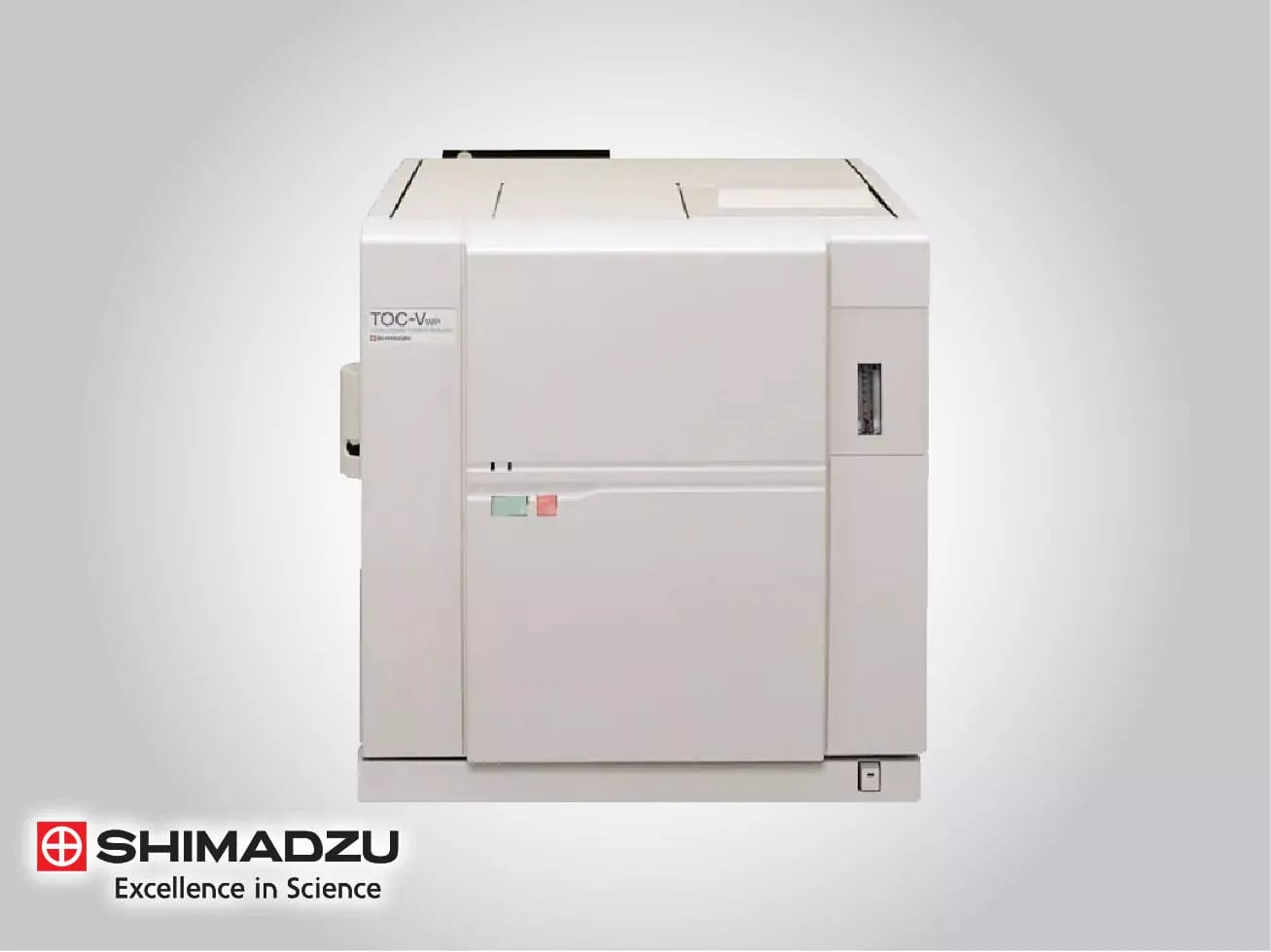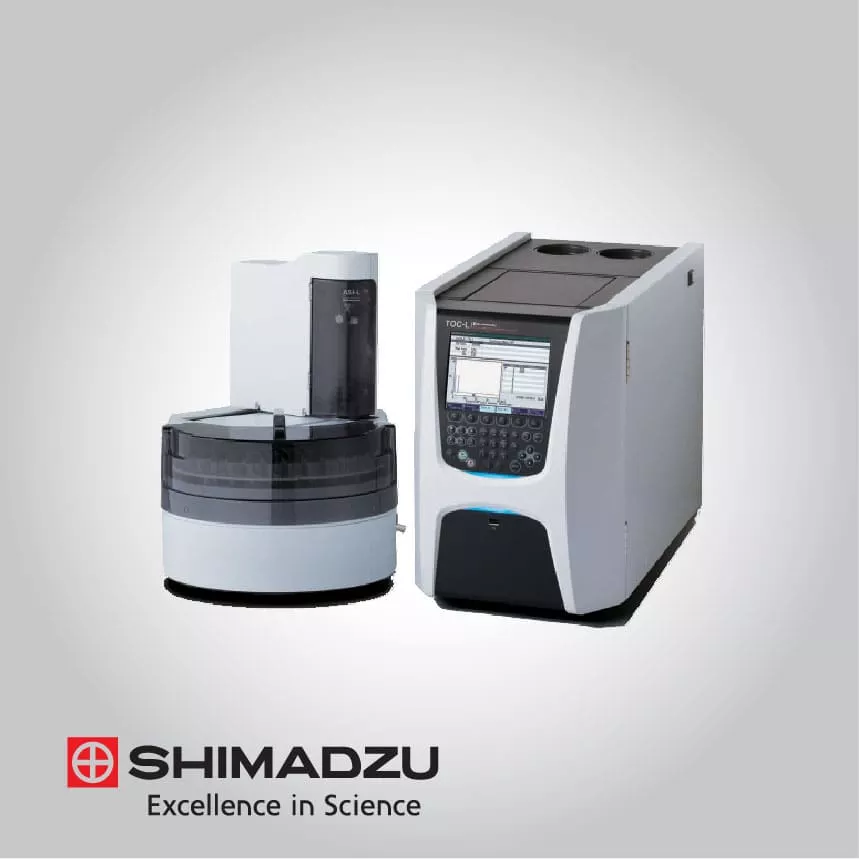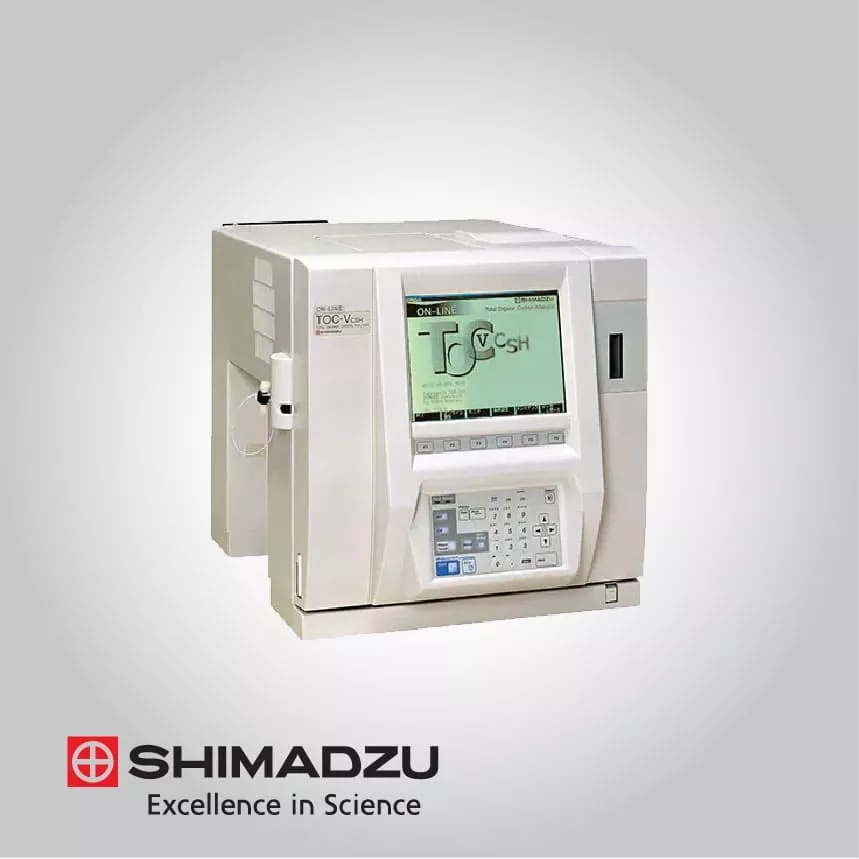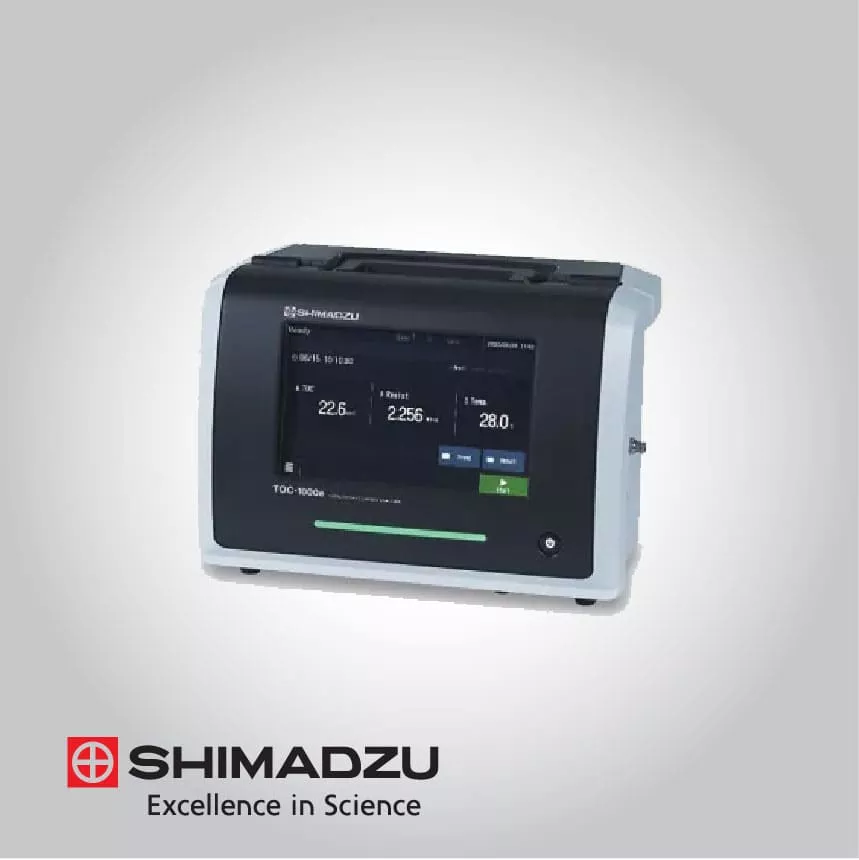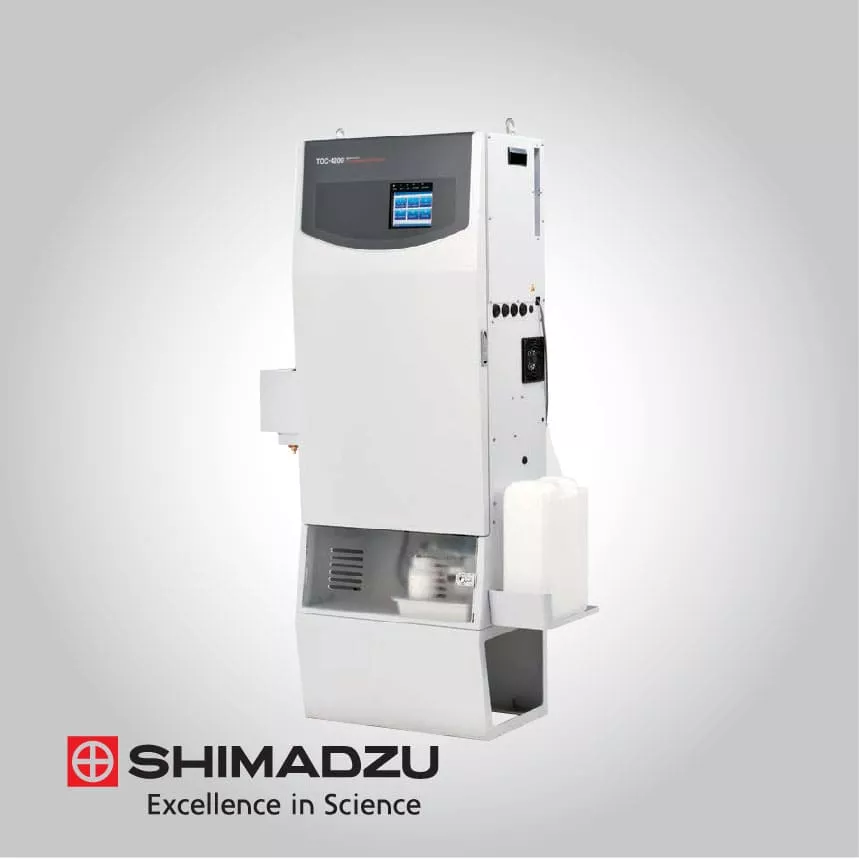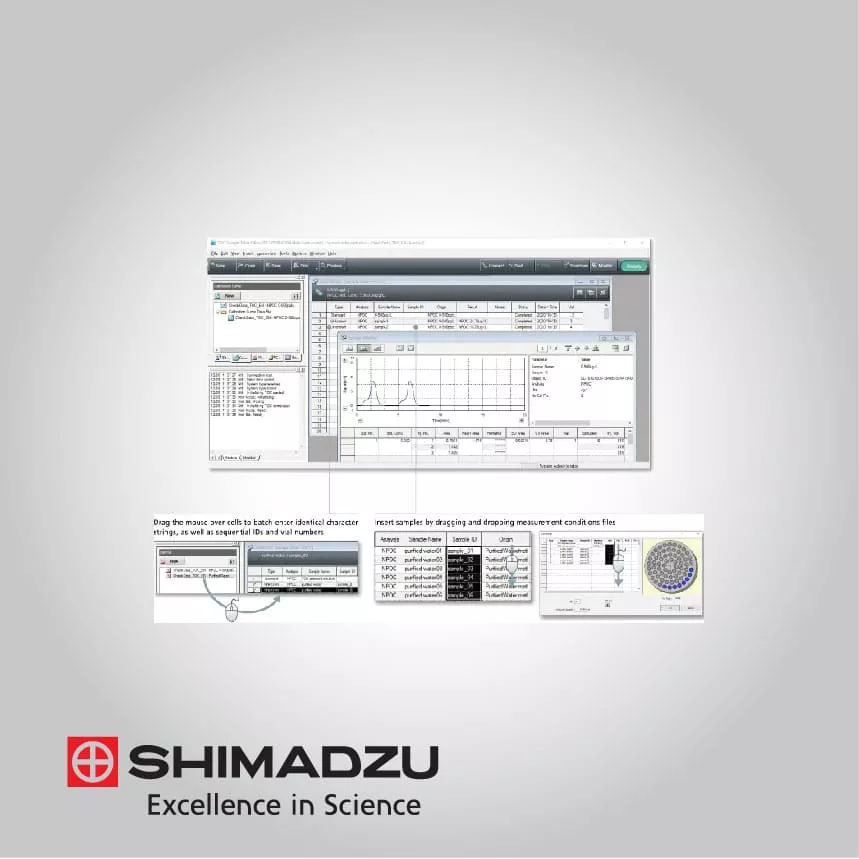
TOC-VWP
Shimdazu TOC-VWP
Measurement Principle
TC Measurement
Phosphoric acid and the oxidant (persulfate) are added to the sample, which is heated under UV illumination to convert the TC in the sample to carbon dioxide. This carbon dioxide flows with the carrier gas via the dehumidifier into the NDIR sample cell. The area of the carbon dioxide peak signal is measured and this peak area is converted to TC concentration using a pre-prepared calibration curve.
IC Measurement
The sample is acidified with phosphoric acid and sparged to convert the IC in the sample to carbon dioxide. This carbon dioxide is detected by the NDIR and the sample IC concentration is measured in the same way as TC.
TOC Measurement
Subtracting the IC concentration from the TC concentration determines the TOC concentration.
NPOC Measurement
The sample is acidified with phosphoric acid and sparged to eliminate the IC. The NPOC concentration is determined by measuring the TC (=NPOC) of the sample after the IC is eliminated, using the same method as for TC measurement.
TOC-VWP Features
- Automatic setting of optimal measurement conditions
When creating the calibration curve, the optimal measurement conditions are displayed when the standard solution concentration is set. Detailed calibration curve information can easily be referenced when setting the measurement conditions.
- Automatic condition changing and re-analysis of out-of-range samples
If the sample peak goes over the calibration curve range, measurement conditions such as dilution rate and injection volume are automatically changed and the analysis is repeated.
- Automatic selection of the best calibration curve
Up to three calibration curves can be set for sample measurement. The optimal calibration curve is selected for the sample and the sample measurements are conducted using these measurement conditions.
- Automatic exclusion of anomalous values and re-calculation of repeated analyses
The mean value, standard deviation, and coefficient of variation are displayed and printed during repeated analyses. Anomalous values can be automatically eliminated and re-calculated.
- Convenient automatic power off function
Automatic power off after electric furnance cools down ensures power is not left on and saves energy.
- Comprehensive calibration system handles many uses
Calibration curve can be created to compensate for TC in water used for standard solution adjustment. A maximum of 25 (model S. model P has no limit) calibration curves can be stored and recalled. All calibration curve data can be displayed and recorded.
Read more about Shimdazu TOC-VWP





